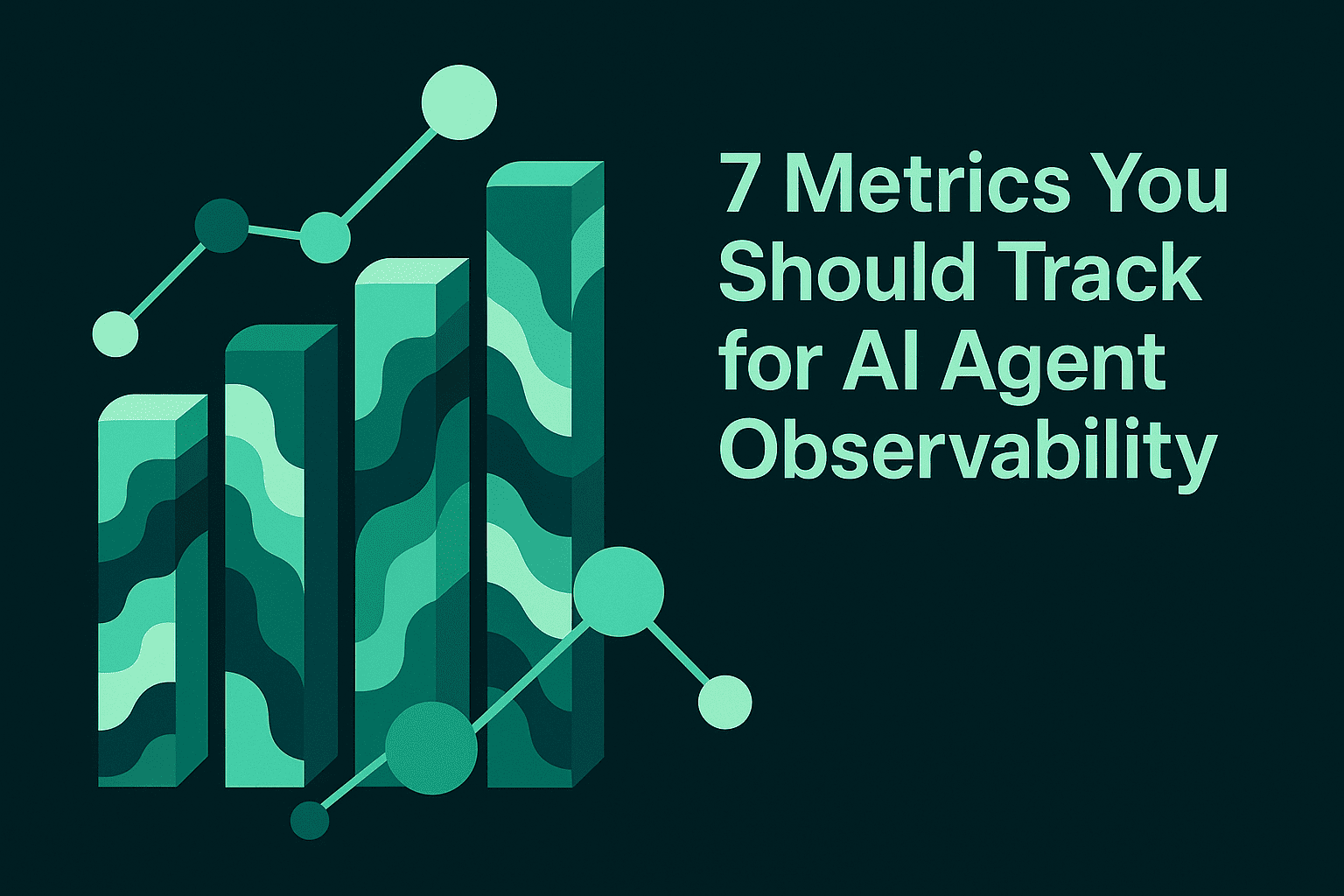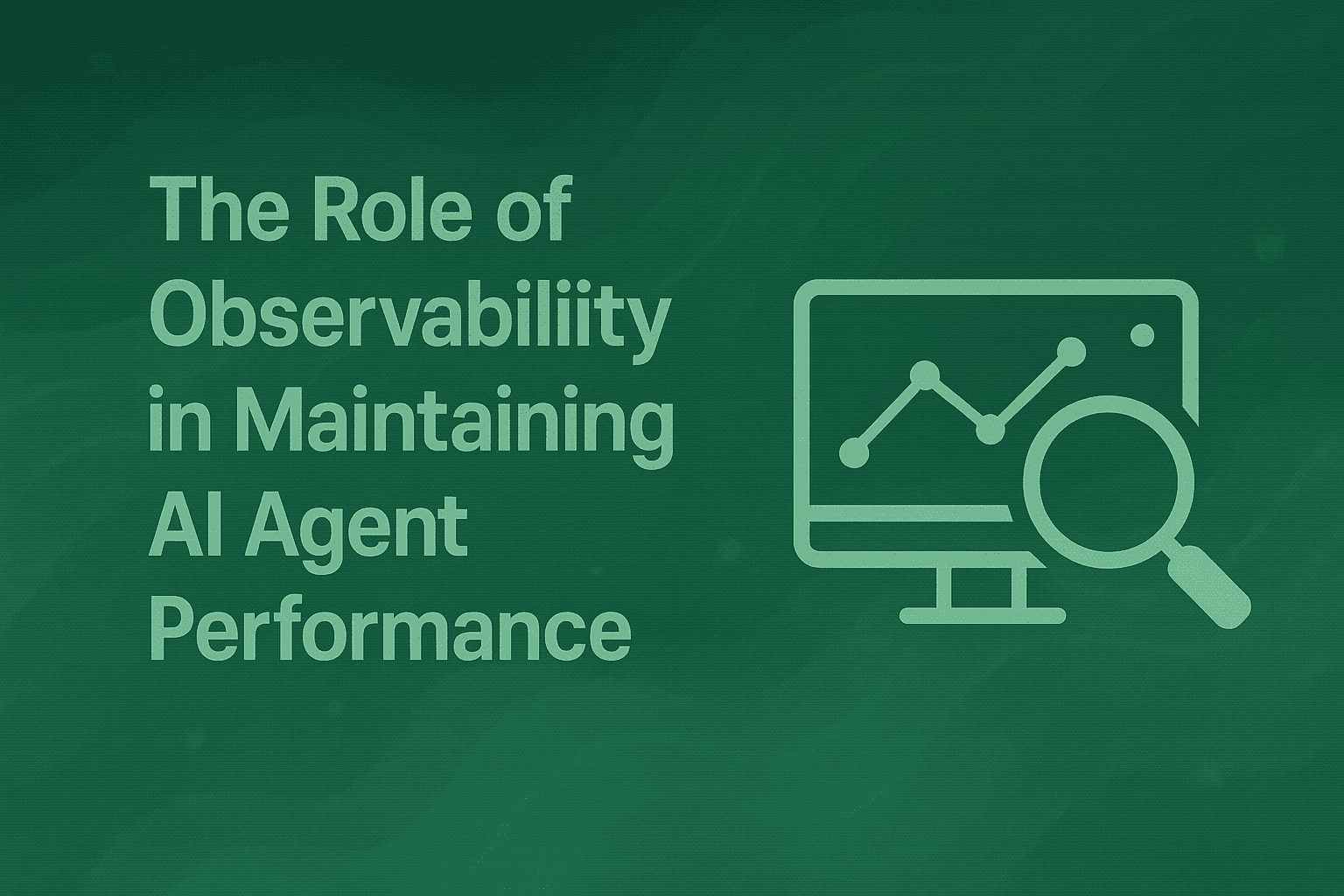7 Metrics You Should Track for AI Agent Observability

TL;DR
This articles talks about the seven core metrics you should track for AI Agent Observability: Step Completion, Step Utility, Task Success, Tool Selection, Toxicity, Faithfulness, and Context Relevance at session, trace, and span levels. Instrument distributed tracing, attach automated evals with human review where needed, and correlate quality with latency and cost to guide releases. Use Maxim’s end-to-end stack for simulation, evaluation, and observability.
Introduction
Here’s how to treat AI agent observability: define outcome-centric metrics, instrument every step of the conversation, and evaluate quality continuously before and after deployment. Agent systems span LLM calls, tool invocations, and retrievals. Observability should convert qualitative debugging into quantitative improvement with repeatable releases.
Maxim AI provides an end-to-end platform for agent simulation, evaluation, and observability. Teams use distributed tracing to capture span-level details, automated evaluations to score behavior, and dashboards to monitor trends and alerts. Explore capabilities, SDKs, and UI workflows in the Maxim AI Docs.
Why is metrics driven observability important?
Metrics convert qualitative notions of “agent quality” into measurable signals that guide engineering decisions. With spans and traces instrumented for each LLM call, tool invocation, and retrieval, observability surfaces failure modes: skipped steps, incorrect tool choices, weak grounding, or safety risks, before those issues degrade user experience. Automated evaluators can run on production logs, enabling regression detection, alerting, and targeted remediation without disrupting active sessions. This approach lowers mean time to resolution, preserves service responsiveness, and supports confident releases by tying improvements to trace-level evidence.
Here are some of the metrics that should be tracked for AI Agent Observability:
- Step Completion
The Step Completion checks whether the agent correctly follows all the expected steps given to complete a task in an ordered or flexibly unordered execution. Maxim's Step Completion is a self-explaining LLM-Eval, meaning it provides a reason for its score. It helps to verify the procedural progress.
Maxim offers two kinds of Step completion metrics:
- The Step Completion - Unordered Match checks whether the agent correctly follows all the expected steps given to complete a task in a flexible execution order.
- The Step Completion - Strict Match evaluator checks whether the agent correctly follows all the expected steps in the same order given to complete a task.
How Is It Calculated?
The Step Completion - Unordered Match score is calculated using the following steps:
- Evaluate whether all required steps were executed.
- Verify if the steps were executed properly in any flexible order ( for unordered match) or in the correct sequence (for strict match).
- Ensure dependencies among steps were properly satisfied.
Actionable Insights:
This surfaces skipped validations, missing confirmations, and out‑of‑sequence actions that derail workflows.
- Attach evaluators for strict and unordered sequences to multi-turn traces so each span maps to a defined step.
- Use simulations to reproduce failures at the exact step and validate fixes before release.
- Correlate completion with latency and cost to identify bottlenecks caused by detours or retries.
Summary: Step Completion transforms “progress” into measurable plan adherence for precise root-cause analysis.
- Step Utility
The Step Utility evaluator measures the number of steps which contribute to solving the overall task in a multi-turn session. Maxim's Step Utility evaluator is a self-explaining LLM-Eval, meaning it provides a reason for its score. It takes session as input which is the entire session of the agent comprising the input and output at each turn. It quantifies the action usefulness.
How Is It Calculated?
The Step Utility score is calculated using the following evaluation process:
- The relevance of the step to the overall task.
- The effectiveness and contribution of the step to advance the overall objective.
- The alignment of the step to match the context of the task. The final score is obtained by determining the number of contributing steps divided by the total number of steps.
Actionable Insights:
Low‑utility steps often indicate redundant tool calls, circular clarifications, or exploratory turns that inflate latency and cost.
- Pair utility scores with tracing data to flag expensive low‑yield actions.
- Prune or consolidate steps and tighten decision criteria to reduce latency.
Summary: Step Utility reveals wasted effort and guides optimizations without compromising accuracy.
- Task Success
The Task Success evaluator measures whether the user's goal is being achieved based on the output of the agent session. Maxim's Task Success evaluator is a self-explaining LLM-Eval, meaning it provides a reason for its score. It takes session as input which is the entire session of the agent comprising the input and output at each turn. A score of 1 indicates the success of the task being completed while 0 indicates a failure.
How Is It Calculated?
The Task Success score is calculated using the following evaluation process:
- Task Inference: The evaluator identifies the task being performed by the agent.
- Scoring: The system evaluates:
- The quality of the output in solving the problem.
- Whether the task was accomplished.
- Whether the constraints were satisfied. The agent must demonstrate successful task completion without violating any user-specified constraints.
Actionable Insights:
Compute pass/fail or graded success at the session level based on domain requirements and policies. Success definitions should reflect business goals.
- Visualize success across prompt versions, models, and personas to guide releases.
- Use simulations to stress edge cases and prevent regressions before deployment.
Evaluator orchestration and visualization are described in the Maxim AI Docs.
Summary: Task Success is the north‑star metric; segment it for release decisions and continuous optimization.
- Tool Selection
The Tool Selection evaluator checks whether the agent made the correct tool choice with the right parameters for every tool call in the trajectory without evaluating the execution success. Maxim's Tool Selection is a self-explaining LLM-Eval, meaning it provides a reason for its metric score. It validates decision quality.
How Is It Calculated?
The Tool Selection score is calculated using the following steps:
- Evaluate whether the right tool call is made given a user request at that point of the trajectory.
- Verify if the arguments were correctly provided.
- Score the number of correct selections divided by the total number of tool calls in the trajectory.
Actionable Insights:
Tool errors: wrong API, missing fields, premature or delayed invocation lead to retries, failures, and poor user experience.
- Instrument spans where tools are invoked and evaluate appropriateness and parameter correctness.
- Correlate tool scores with Step Completion and Task Success to isolate root causes.
- Re-run simulations at decision points to verify routing and parameter fixes.
Summary: Better Tool Selection cuts latency, prevents cascaded errors, and increases completion rates.
- Toxicity
The Toxicity evaluator helps evaluate toxicity in the output. It helps flag personal attacks, mockery, hate, dismissiveness, or threats that can be disrespectful. Higher score corresponds to greater toxicity in the output.
How Is It Calculated?
The Toxicity evaluator first uses an LLM to extract all statements found in the output, and then classifies whether each opinion is toxic or not.
Actionable insights:
Evaluate outputs for harmful or abusive language and flag sessions that violate content standards. Safety should operate as a release gate with clear thresholds and alerting.
- Apply automated moderation and add human review for edge cases.
- Monitor trends post‑changes to prompts, models, or retrieval to catch regressions early.
Summary: Toxicity monitoring protects users and brands; block increases beyond agreed SLOs.
- Faithfulness
The Faithfulness evaluator measures the quality of your RAG pipeline's generator by evaluating whether the output factually aligns with the contents of the context and input. Maxim's Faithfulness evaluator is a self-explaining LLM-Eval, meaning it provides a reason for its metric score. Higher score corresponds to greater faithfulness in the output.
How Is It Calculated?
The Faithfulness evaluator first uses an LLM to extract all claims made in the output, then classifies whether each claim is faithful based on the facts presented in the context, input, and system messages if present. A claim is considered faithful if it does not contradict any facts presented in the context, input, and system message (if present).
Actionable Insights:
Faithfulness is essential in RAG and tool‑augmented generation where answers must be grounded and verifiable.
- Attach evaluators to response spans that compare claims against retrieved documents or API outputs.
- Curate datasets from production logs where faithfulness fails; test prompt and retrieval fixes in simulation.
- Tie faithfulness trends to retriever quality and prompt constraints for targeted improvements.
Summary: Strong faithfulness lowers hallucination risk and supports compliance in high‑stakes domains.
- Context Relevance
The Context Relevance evaluator assesses how relevant the information in the retrieved context is to the given input. Maxim's context relevance evaluator is a self-explanatory LLM-Eval, meaning it provides both a score and an explanation for that score. Higher score corresponds to greater relevance of the context.
How Is It Calculated?
It first extracts all statements from the retrieved context. It then assesses each statement to determine its relevance to the input, providing a detailed measure of how well the retrieved context supports the given input. It assess retriever quality
Actionable Insights:
Weak relevance typically leads to poor faithfulness and low task success.
- Instrument retrieval spans with relevance scoring and, when applicable, precision and recall variants.
- Tune embeddings, chunking, and re‑ranking based on correlations with Faithfulness and Task Success.
- Use simulations to stress retrieval under diverse queries and personas and reproduce failures deterministically.
Summary: Fix retrieval first; strong relevance improves grounding, reduces latency, and raises success rates.
Conclusion
In short, metrics‑driven observability is the backbone of AI reliability. By tracking metrics such as Step Completion, Step Utility, Task Success, Tool Selection, Toxicity, Faithfulness, and Context Relevance at session, trace, and span levels, and tying those scores to latency and cost you turn qualitative debugging into quantitative, repeatable improvement. With Maxim’s distributed tracing and automated evaluators, failure modes surface quick detection (skipped steps, wrong tools, weak grounding, safety risks), enabling fast, targeted fixes without disrupting active sessions. Maxim’s closed loop of simulation, evaluation, and observability shortens MTTR, prevents regressions, and supports confident releases backed by trace‑level evidence.
Request a demo to see these workflows in action: Maxim Demo. Or start now: Sign up to Maxim.
Further Reading and Resources:


